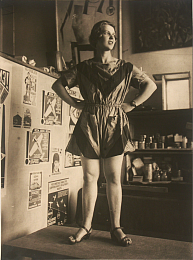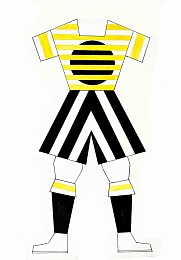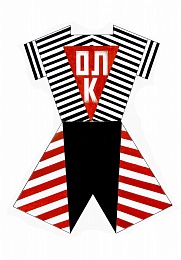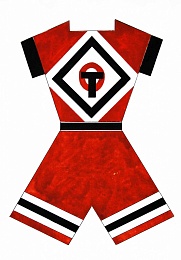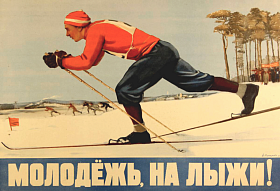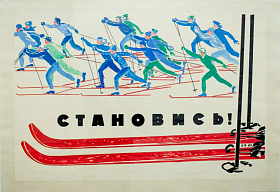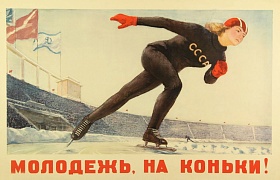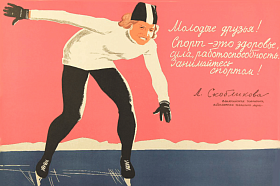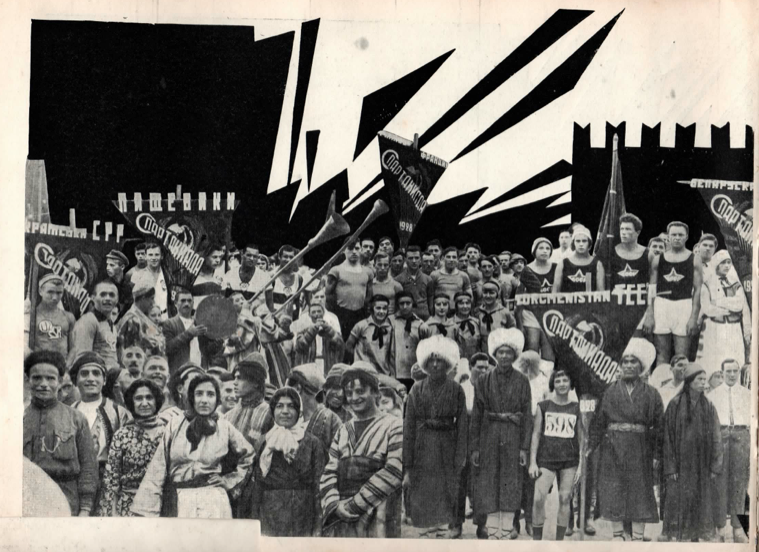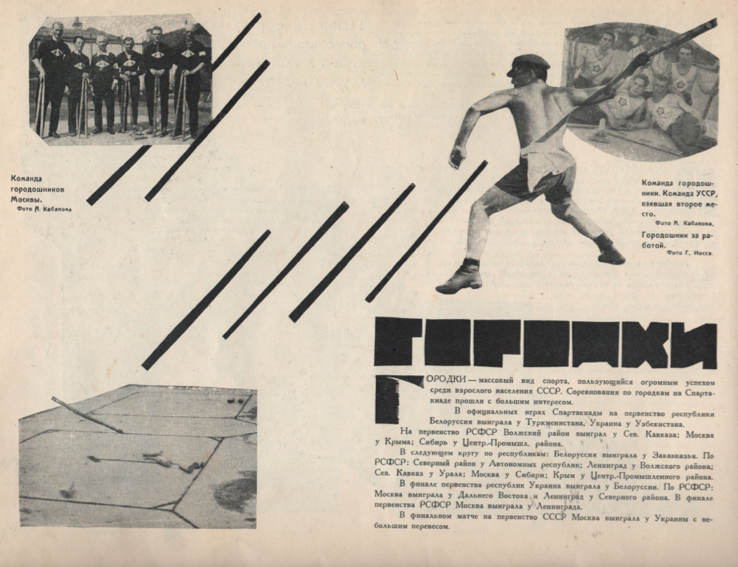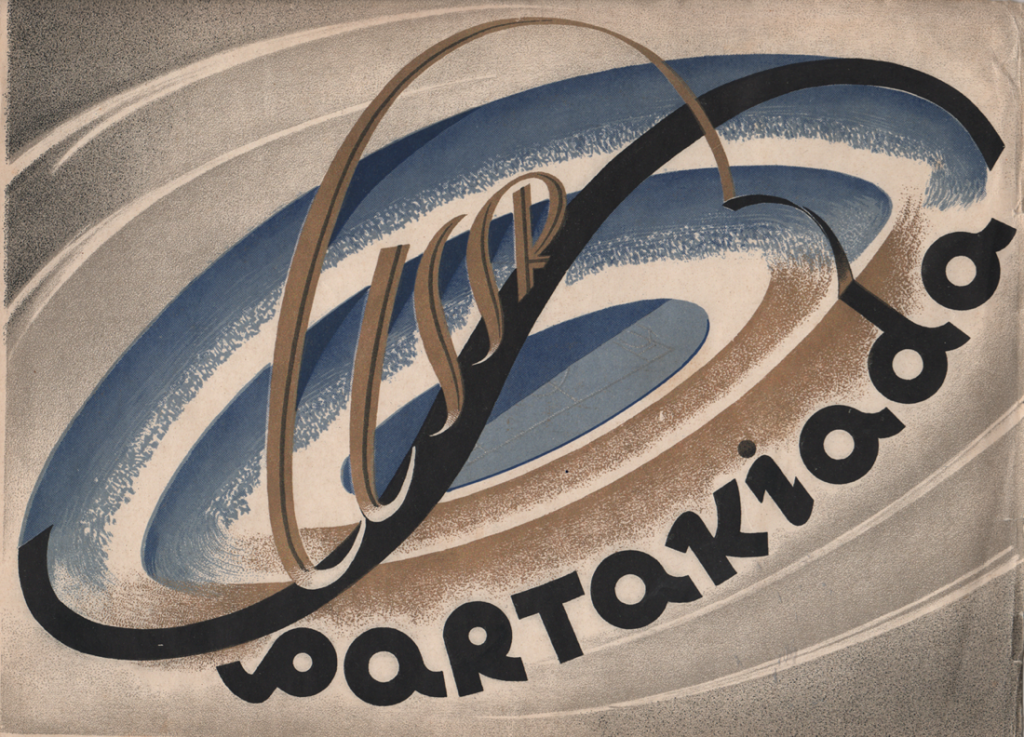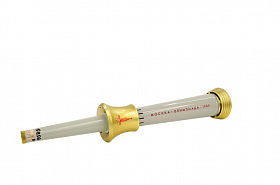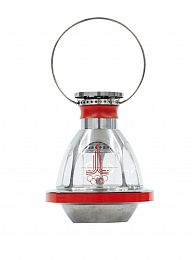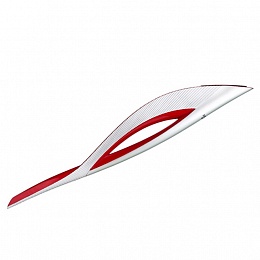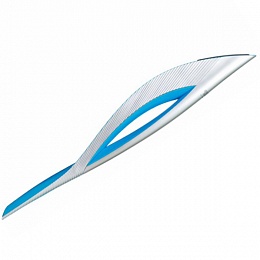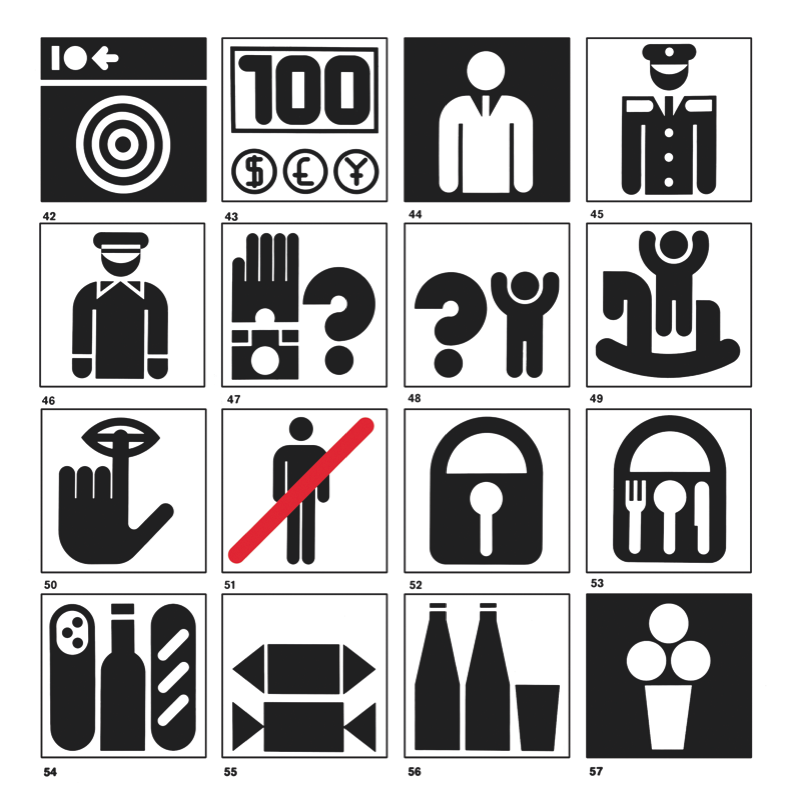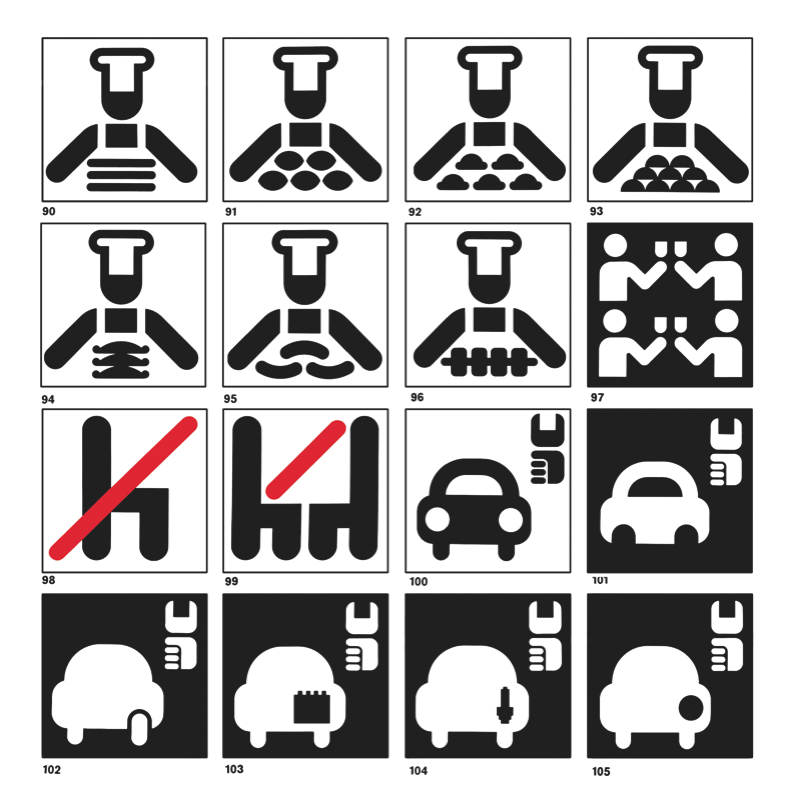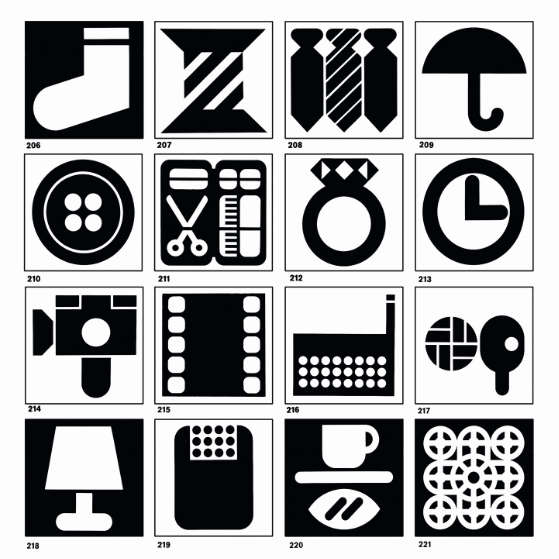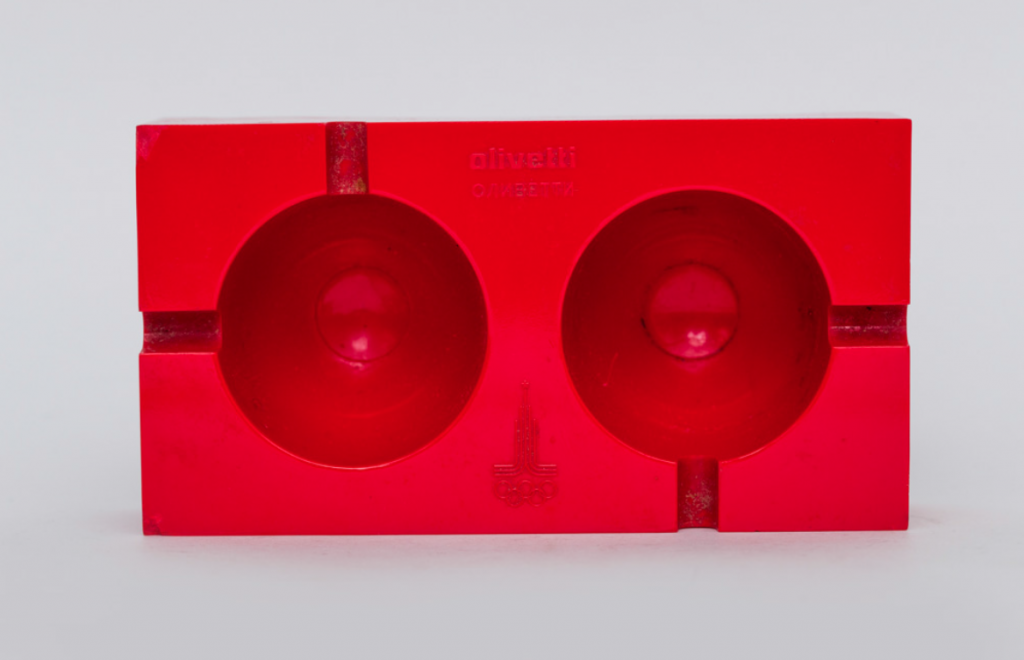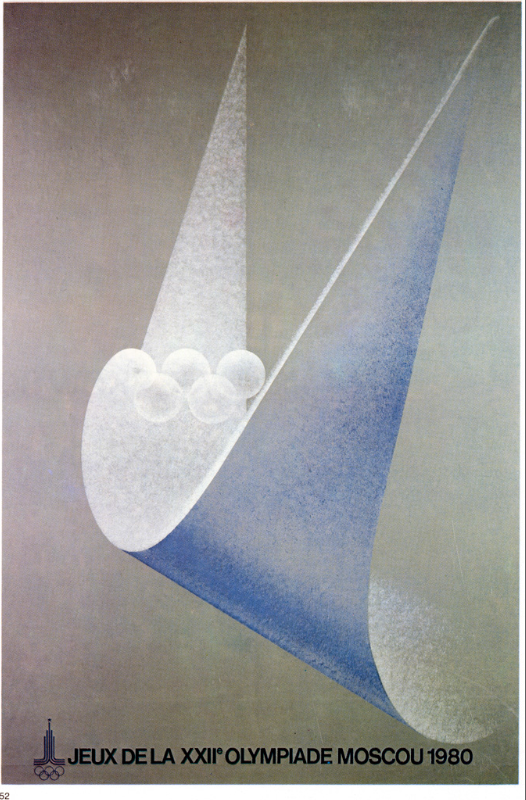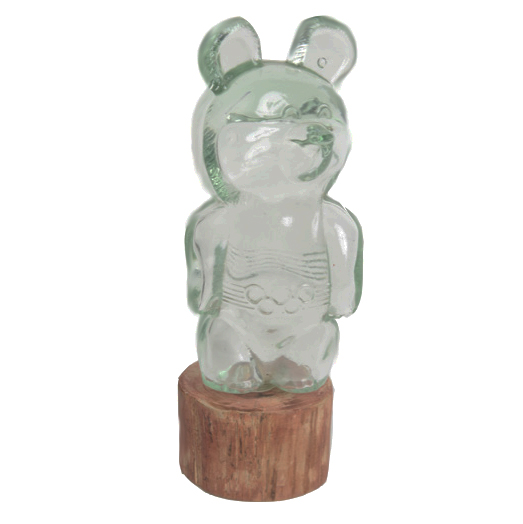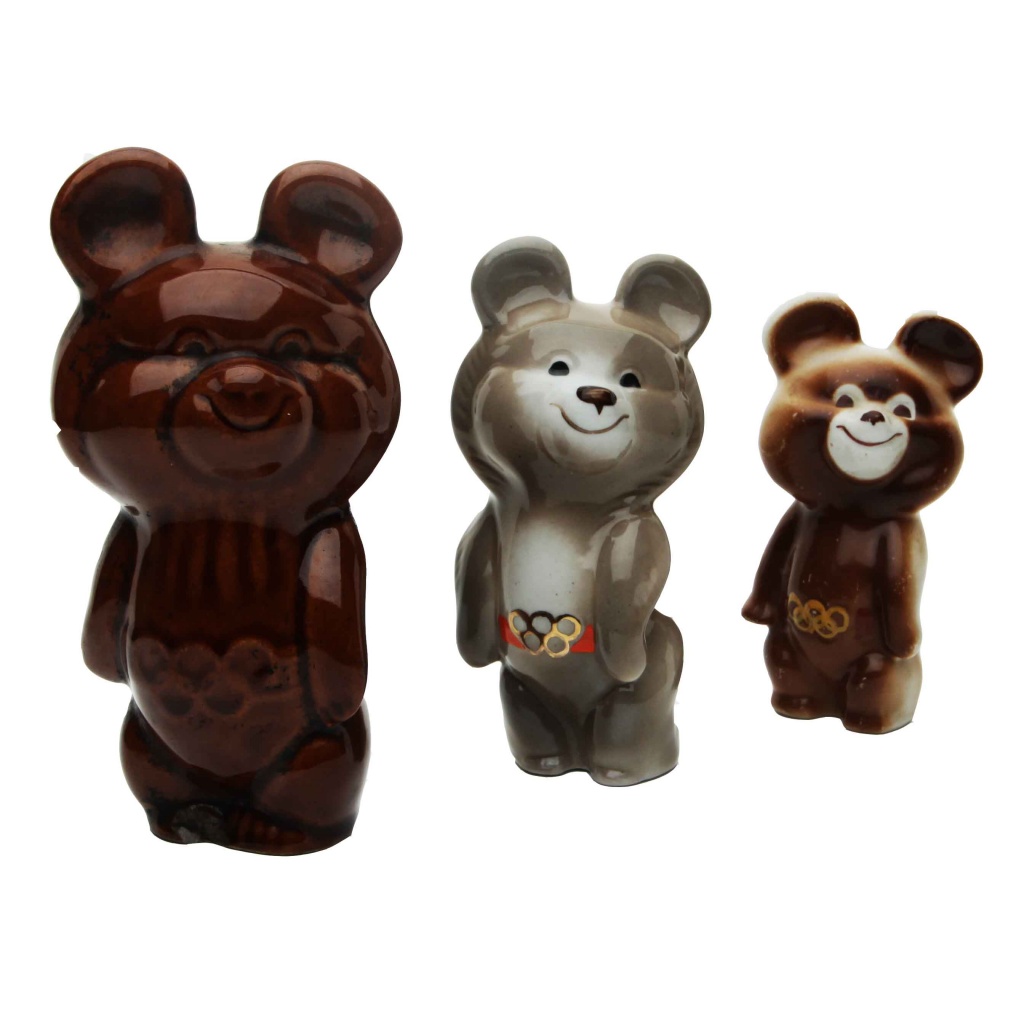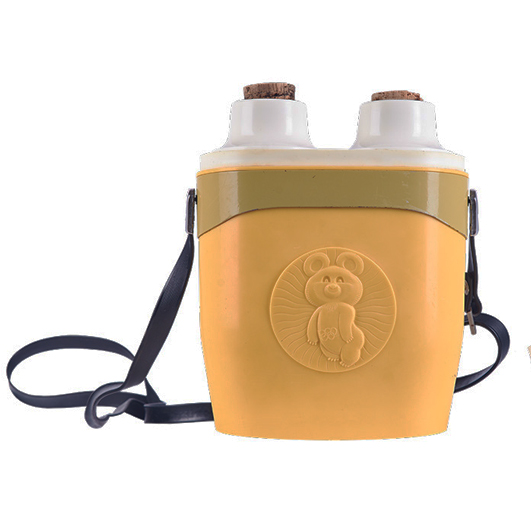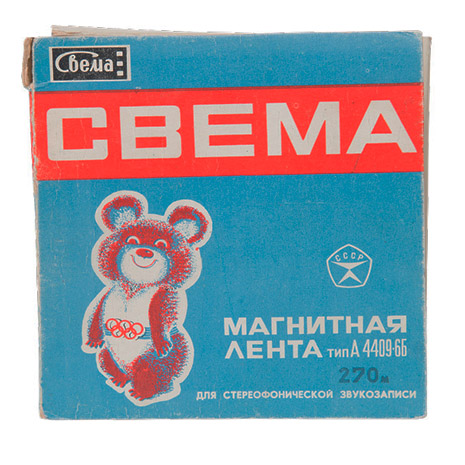DESIGN AND SPORT
This section focuses on the role of graphic, industrial, environmental design and fashion in the shaping of Russian sports culture of the 19th-21st centuries: from the propaganda of healthy living to the formation of a sports industry and a positive image of the country with successful performances at international competitions and in the Olympic Games. This section features famous design pieces such sports uniforms designed by Lubov Popova, works by Gustav Klutsis, Alexander Dayneka and many others alongside pieces by little known Soviet designers.
In the first third of the 20th century physical form was considered an integral quality for both the builders of the ‘bright soviet future’ and the ‘ideal soviet person’ created by the artists of the Russian avant-garde. Sports uniforms were a form of professional wear created by Russian avant-garde artists, and more specifically by Varvara Stepanova. Sports parades and athletes inspired Alexander Rodchenko to create photographs and collages that demonstrated the new soviet person and society.
In the 1930’s the cult of a physically fit body and the physical movement related to it were an important part of government ideology. They served as modules for soviet propaganda and bolstered the enthusiasm and optimist of the nation despite economic hardship that the country was experiencing at the time.
The history of sports in the USSR continued to develop even during conditions of increased shortages. Sports became an important part of leisure for a Soviet person, easily available to millions of citizens with basic sports equipment found in most every Soviet home. The post-war period saw the creation of specialized institutes, such as the All-Union Design Institute for Sport and Tourist Equipment (VISTI) and Soyuzsportproyekt, an institute that designed sport facilities. Following the end of World War II outdoor exercise areas, stadiums and sport schools started to appear all across the Soviet Union.
1980 OLYMPIC GAMES
OLYMPIC TORCH
In 1976 the design for the Olympic torch for the 1980 Olympic Games was curated by a specially formed committee for the ‘Overseeing of the 1980 Olympic Torch Relay’. A group of specialists were tasked with picking out the outer and inner design of the torch.
Initially, the torch was suppose to be design and produced by a Japanese manufacturer. However, soviet bureaucrats did not like the bamboo torch design that they proposed. Therefore, the order ended up going to the Leningrad automotive factory named after Klimov. A group of engineers headed by Boris Tuchin were given only a month to complete the torch design and they finished in record time.
By 1980 the factory produced 6,200 torches for the Olympics with a gold-colored top and handle. Liquid gas cartages together with special threads soaked in olive oil were fitted inside the torch. This gave the flame a pink tinge.
PICTOGRAM SYSTEM SHOWING DIFFERENT OLYMPIC SPORTS
Designer: N. Belkov
NAVIGATIONAL PICTOGRAM SYSTEM FOR 1980 OLYMPIC GAMES
Designers: V. Akopov, M. Anikst, V. D'jakonov, A. Krukov, I. Tihomirov, B. Trofimov, A. Shumilin.
LOGO OF THE 1980 OLYMPIC GAMES
Designers: V. Arsen'ev (contested by N. Nikitin), edited by V. Akopov and V. D'jakonov
"THE BEAR" - OLYMPIC TALISMAN
Designer: V. Chizhikov
1980 SPORTS UNIFORMS
|
|

